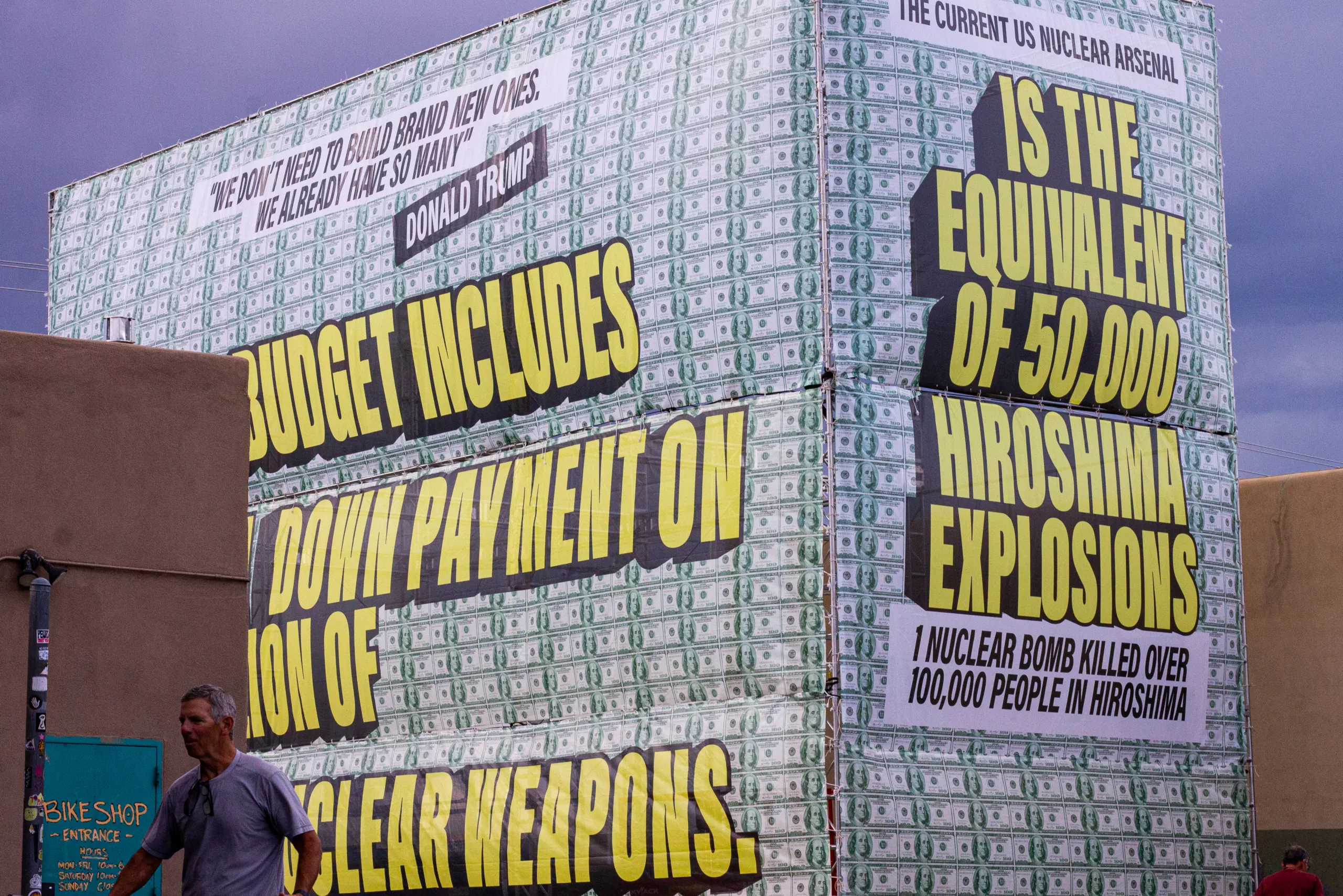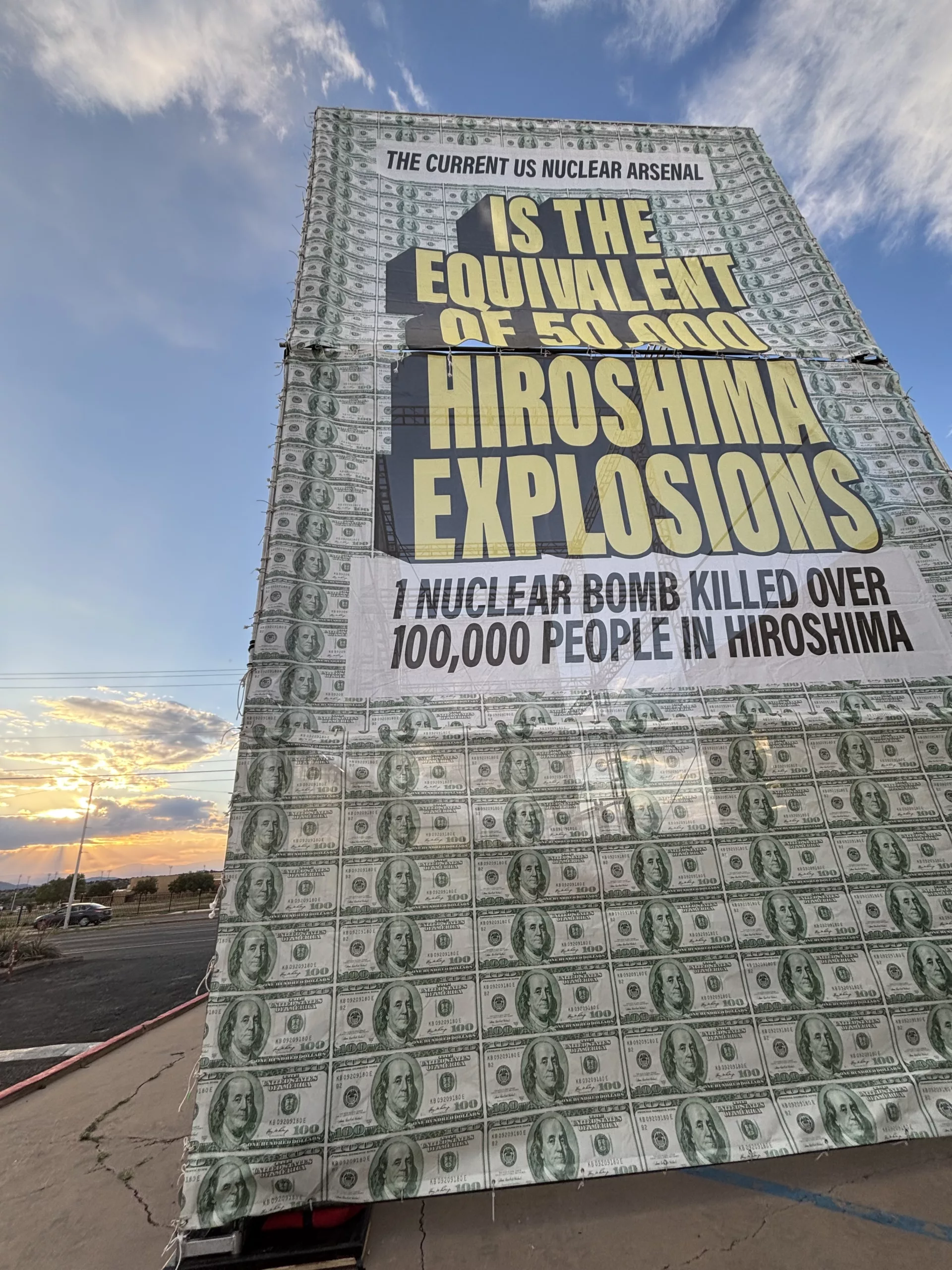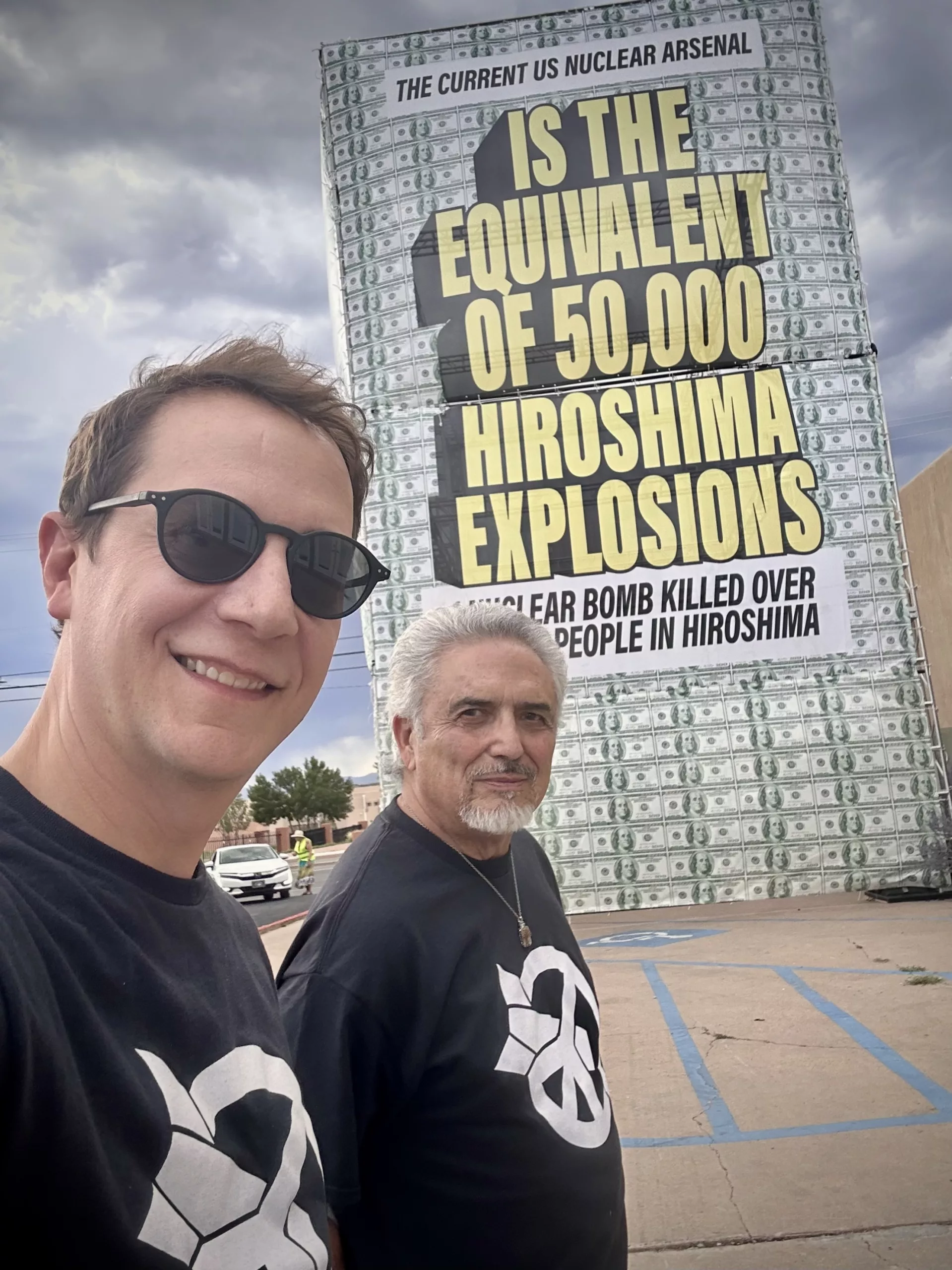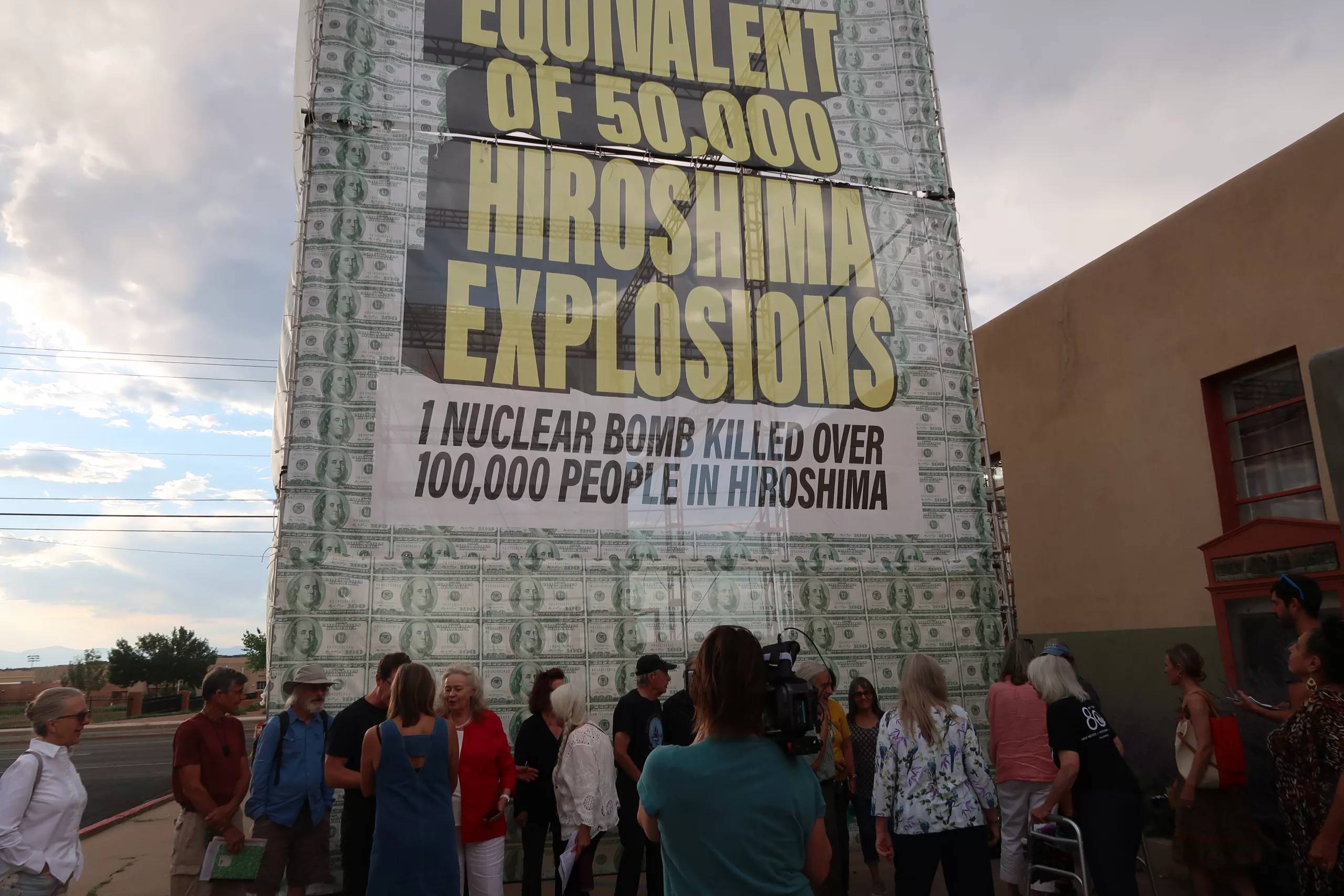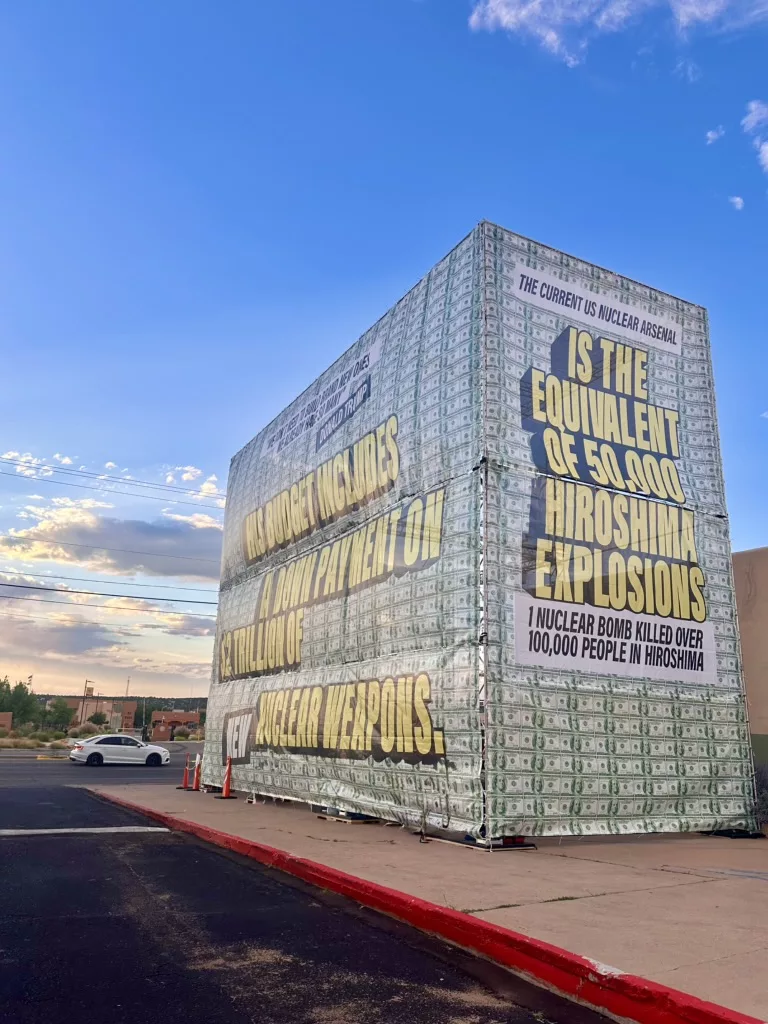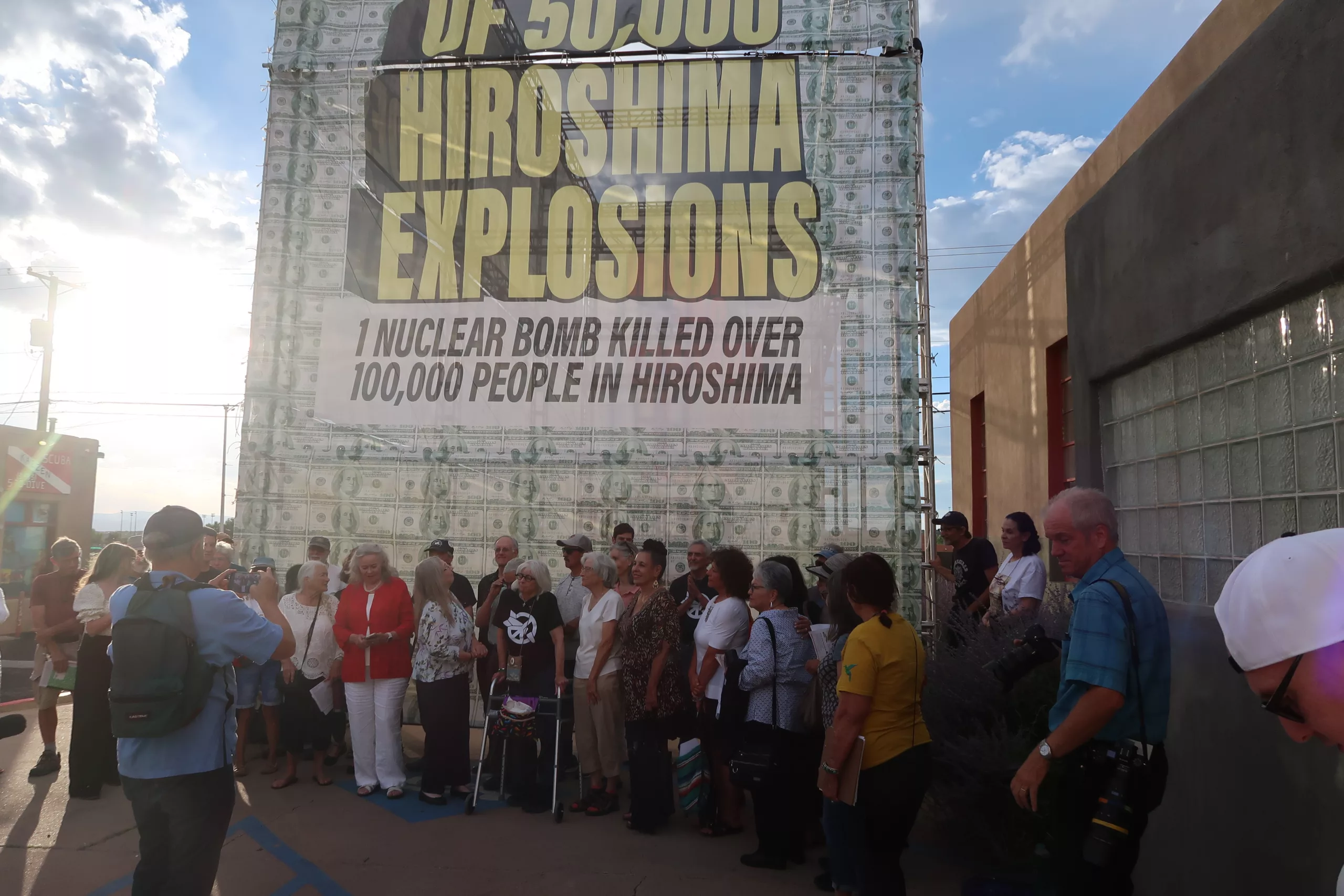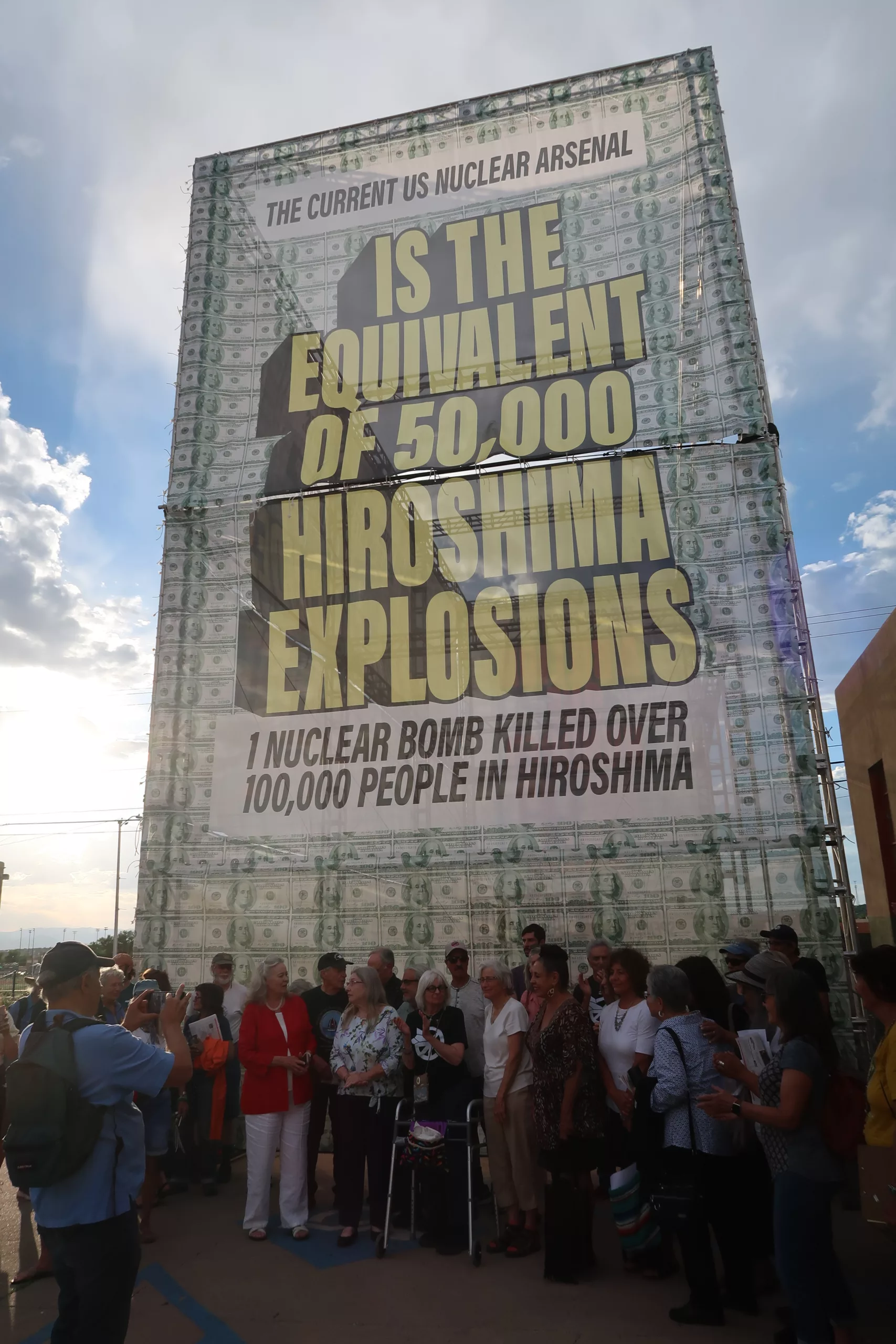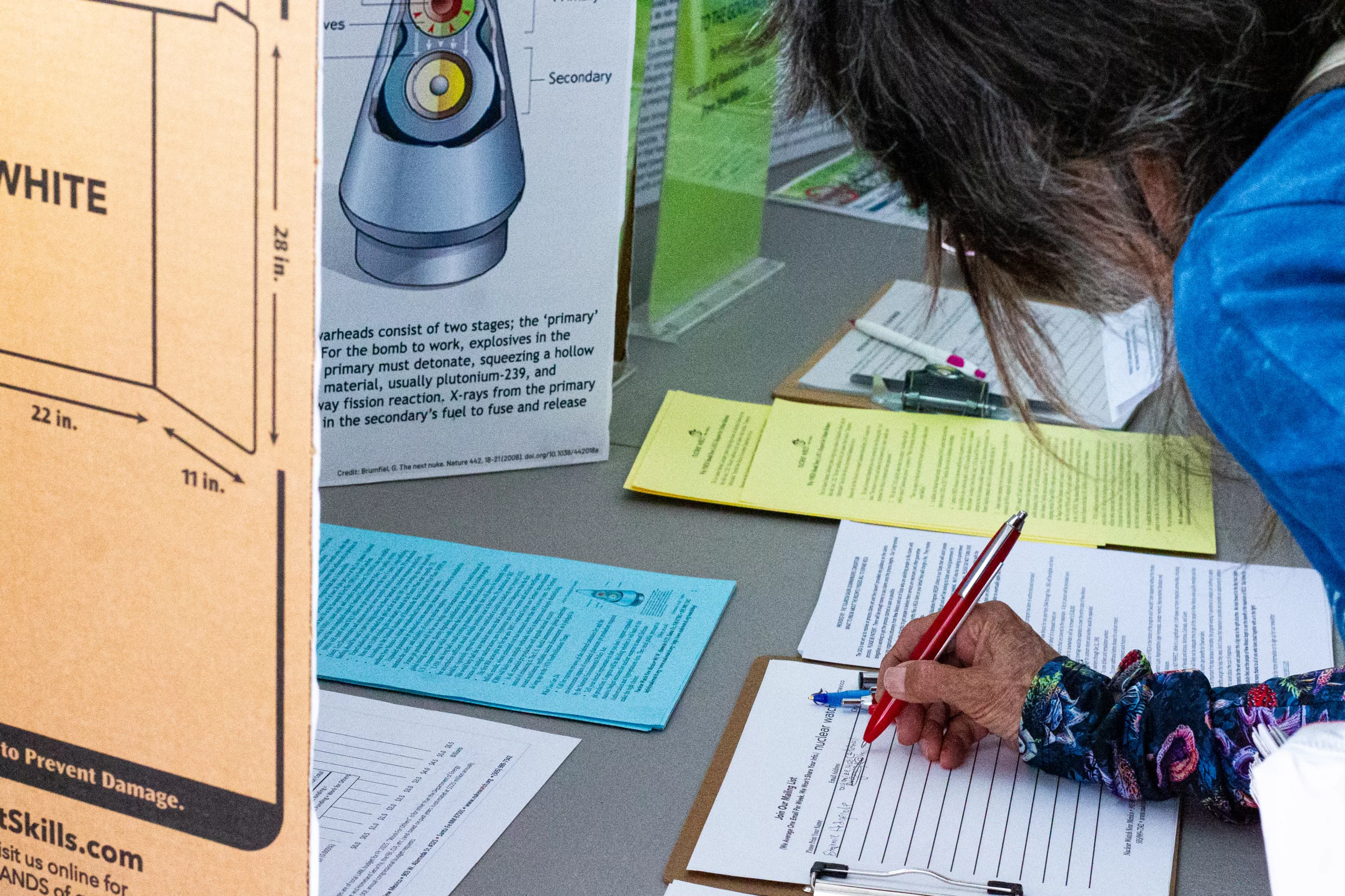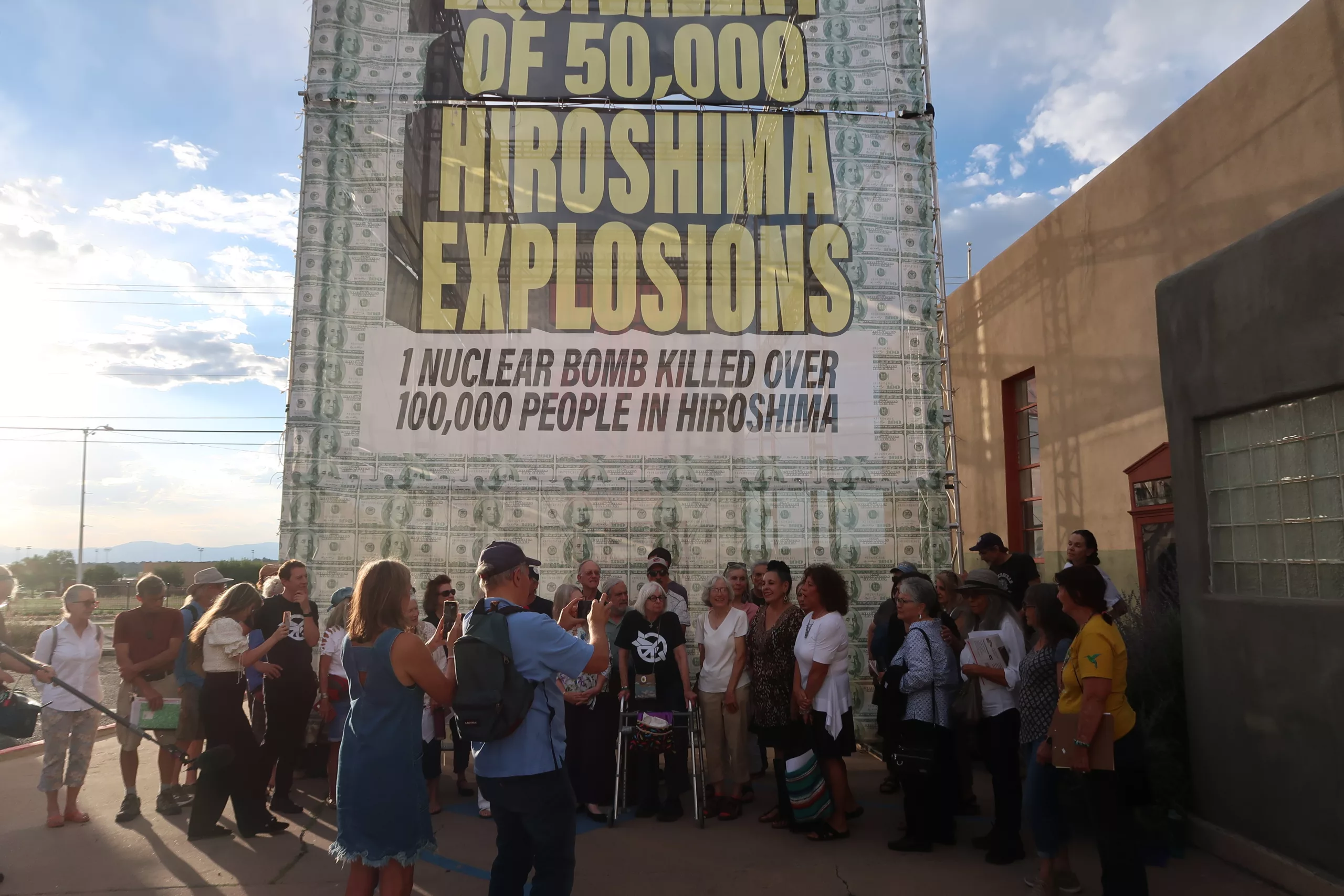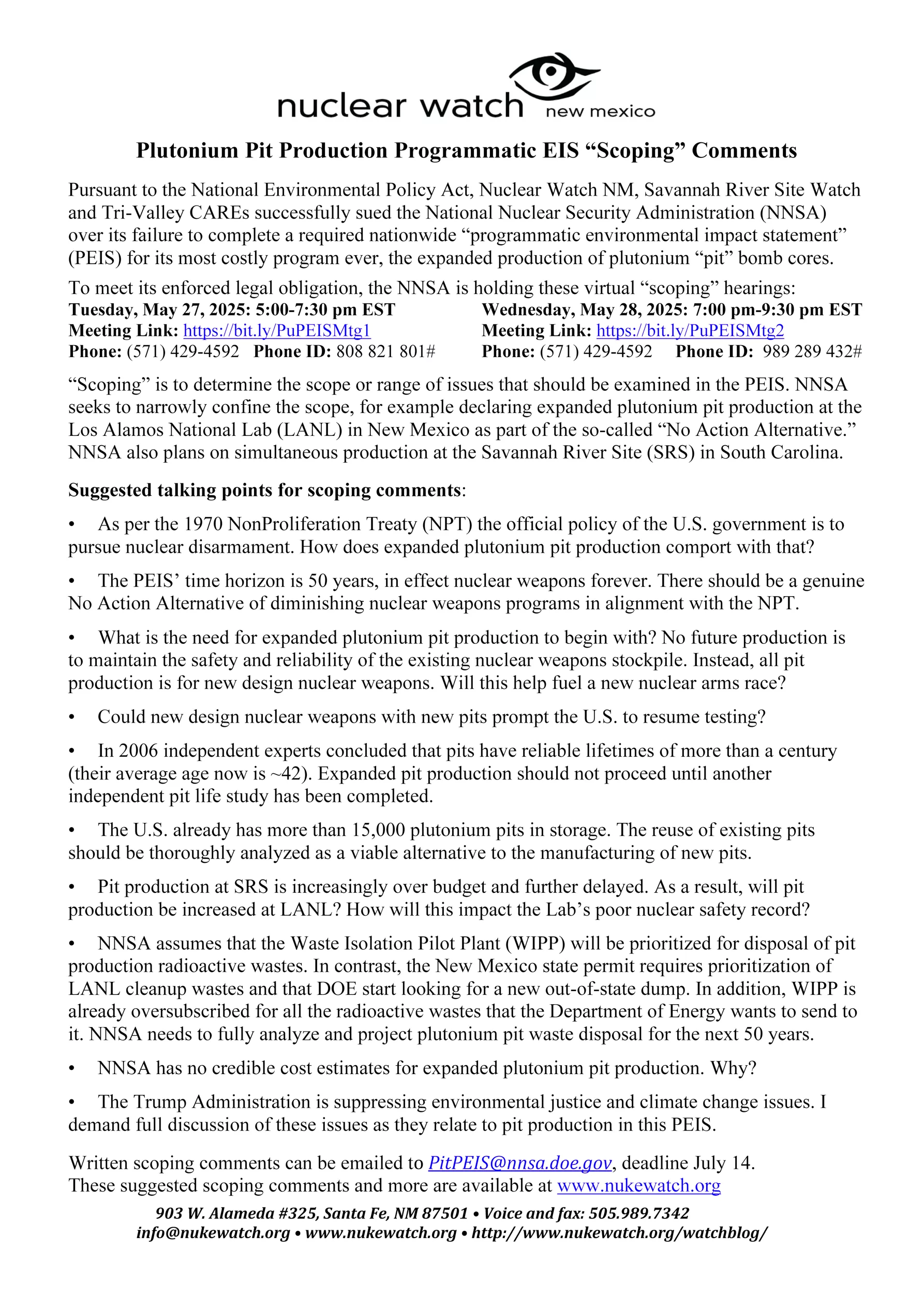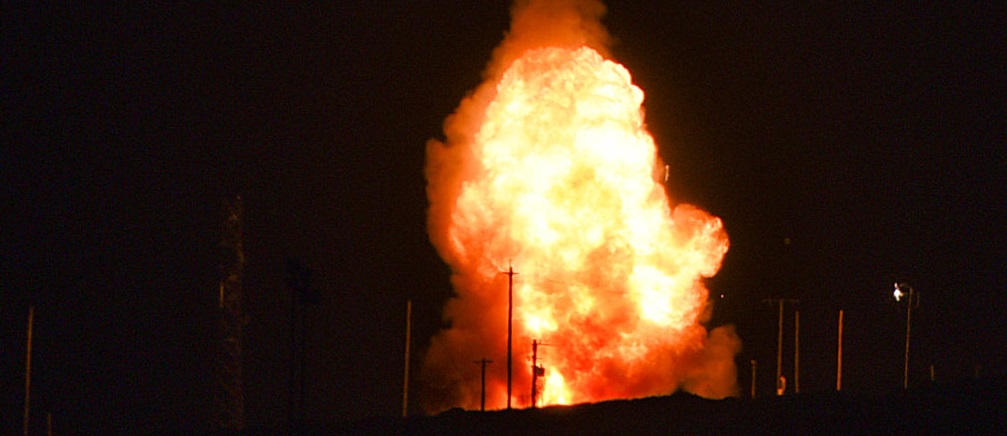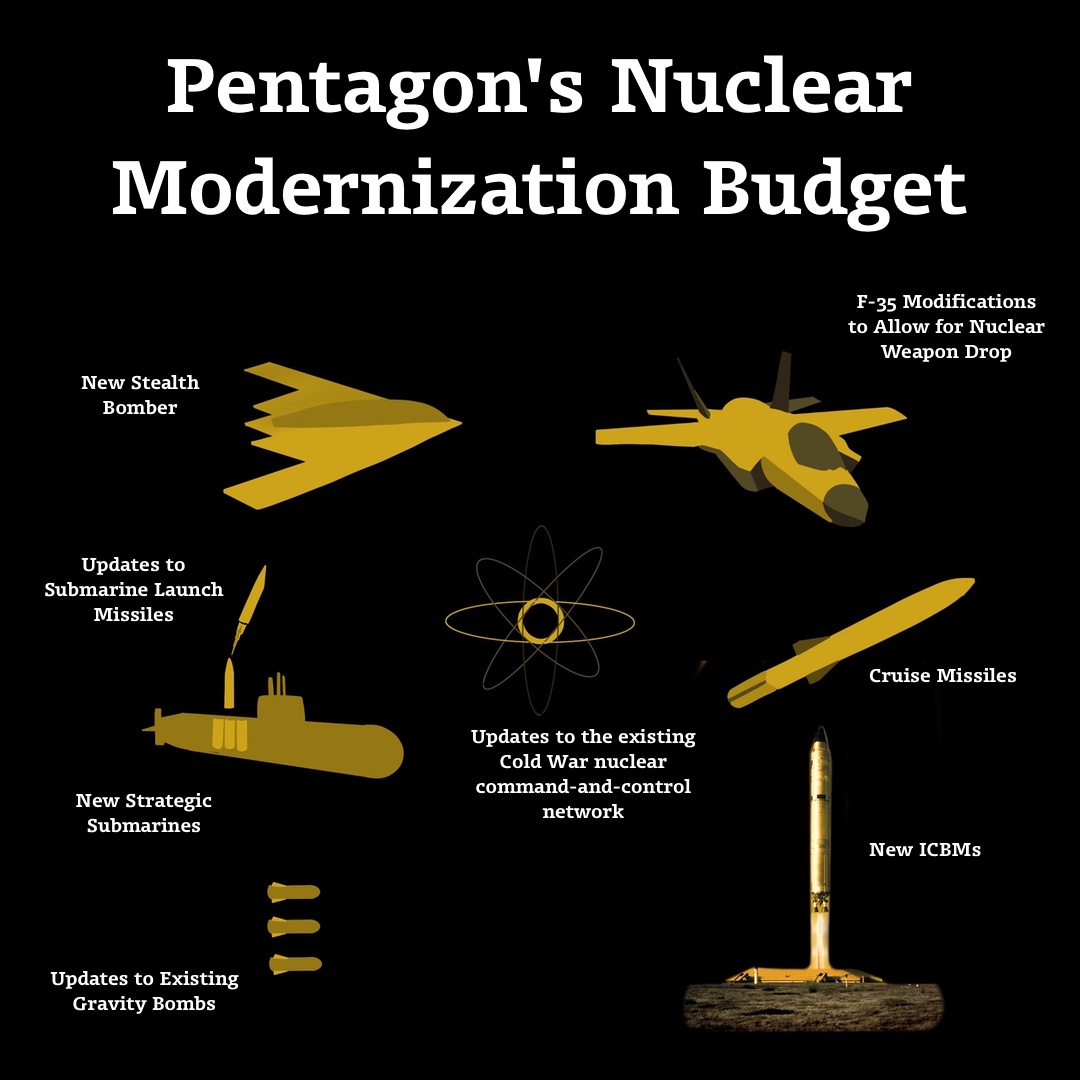RECENT UPDATES
“A House of Dynamite” New Netflix Nuclear Catastrophe Film: Fiction, for Now
The reviews are rolling in for “A House of Dynamite,” which premiered in Europe earlier this month before coming to the U.S. on October 10th, with a full Netflix release scheduled for the 24th. Here’s the trailer, and see the schedule for Santa Fe theater showings here:
This Week! Santa Fe Theater Screenings for the Film “A House of Dynamite”
I attended one of these screenings last night, and I’ll let the professional critic reviews give the gist:
The Kathryn Bigelow thriller looks at what might happen if a ballistic missile were headed to the U.S. The director hopes the movie will start a conversation. New York Times: At Venice, ‘A House of Dynamite’ Is Scarier Than Most Horror Films
“The Netflix thriller captures from multiple perspectives the White House response to an unattributed missile launch headed for a major U.S. city in the harrowing 20 minutes until projected impact…”An unrelenting chokehold thriller so controlled, kinetic and unsettlingly immersive that you stagger out at the end of it wondering if the world will still be intact.” ‘A House of Dynamite’ Review: Idris Elba and Rebecca Ferguson in Kathryn Bigelow’s Precision-Tooled, Viscerally Unsettling Nail-Biter
“Told from the perspective of soldiers at a remote Alaskan missile base, staffers in the White House situation room, military officials at US Central Command (CENTCOM), and the president of the United States, the film weaves an overlapping timeline to show how the United States would respond to a missile attack…The film doesn’t want viewers to ask themselves how to thwart a nuclear attack on the United States. Rather, it wants the viewer to question the value of having nuclear weapons at all. ‘None of this makes sense,’ the President (Idris Elba) bemoans, ‘Making all these bombs and all these plans.'”
“A House of Dynamite is a terrifying examination of how terribly wrong things can go even with highly competent people in charge…But that’s also not necessarily the world we’re living in…The film shows why the worst can happen, even when competent, well-meaning people are trying to do the right thing.
But what if competence and decency are in short supply?” A House of Dynamite: Bigelow’s latest thriller shows why nuclear bombs are only part of the danger
This film left me reeling with tension and anxiety and exactly as the Times article titles it, is scarier than most horror films. Unlike ‘Oppenheimer,’ which largely glorified the invention of the atomic weapon, ‘A House of Dynamite’ makes it impossible to ignore the threat that nuclear weapons pose to our world. Working backwards from perspectives, and focused on how we can actually improve our odds of keeping this story a fictional one, here is what struck me most about this film:
-
-
Only one person decides what happens. But the real threat isn’t one reckless leader — it’s a reckless system. The final segment of the film features the “nuclear football” heavily, a briefcase containing launch procedures and options. In the United States, the president holds the sole and absolute authority to order the use of nuclear weapons. In the film, there are many voices in the President’s ear, but two primary perspectives quickly emerge after the defense fails and the ICBM remains inbound to its U.S. target: “One side advocates a retaliatory strike; the other, nothing. ‘It’s surrender or suicide,’ one adviser tells the President,” – thebulletin.org. The military aide carrying the nuclear football is tasked with providing the President the list of options if retaliation is chosen. An absolute must-read, Daniel Ellsberg’s book “The Doomsday Machine” breaks down many of the themes in the film with pure and terrifyingly honest account of Cold War-era nuclear strategy. In terms of launch authority, he describes how the inherent instability of the delegated command structure of the nuclear apparatus makes accidental or unwanted war an ever-present danger.
-
August 6th U.S. Atomic Bombing of Hiroshima Commemoration in Santa Fe
Eighty Years Later, it is Beyond Time to Get Rid of Nuclear Weapons.
Last week on August 6, 2025, the 80th anniversary of the U.S. atomic bombing of Hiroshima, community members gathered at the Center for Progress and Justice on Cerrillos Road in Santa Fe to honor the solemn occasion and demand an end to the ongoing nuclear weapons harm and destruction that first began here in New Mexico.
The event was organized by Nuclear Watch New Mexico in collaboration with the Up in Arms campaign by Ben Cohen, co-founder of Ben & Jerry's, to reduce military and nuclear weapons spending, the International Campaign to Abolish Nuclear Weapons (winners of the 2017 Nobel Peace Prize), the Santa Fe Archdiocese, the Back from the Brink New Mexico Hub, and the Tularosa Basin Downwinders Consortium. It centered around a massive public art installation from Up in Arms of a towering cubic structure framed by messages on top of images of $100 bills. The structure is sized to literally hold $100 billion of those bills, respresenting what the U.S. spends every year on nuclear weapons (the total cost of nuclear weapons "modernization" is up to $2 trillion). Visible to thousands of drivers each day, the large installation pressures viewers to reckon with the scale of this cost and to imagine what else those resources could make possible. A prominent message on one of the four sides quotes the president in saying, "'We don't need to build brand new ones. We already have so many,' — Donald Trump" and below it, "His budget includes a down payment of $2 trillion of nuclear weapons." Another side reads, "The current U.S. nuclear arsenal is the equivalent of 50,00 Hiroshima explosions. One nuclear bomb killed over 100,000 people in Hiroshima."
The installation will remain on display for the foreseeable future, GO SEE IT NOW! 1420 Cerrillos Road, Santa Fe, NM 87505.
During the event, speakers Archbishop John C. Wester (by video from Japan), Tina Cordova of the Tularosa Basin Downwinders, Sophie Stroud from Nuclear Watch New Mexico, Anne Pierce-Jones from Back from the Brink, Ben Cohen representing Up in Arms, and Seth Shelden from ICAN all gave concrete steps and actions that concerned citizens can take to help promote a safer world. The speakers were presented by former Santa Fe County Commissioner Anna Hansen, who stated, “Disarmament is the only answer. I have spent my life working to end the nuclear cycle, as many have, and most of us in this room have never known a world without nuclear weapons.”
Speakers drew connections between the devastation in Hiroshima and the continued production of plutonium pits at LANL. At Los Alamos National Lab alone, five billion dollars will be poured into nuclear weapons programs in Fiscal Year 2026, starting this October. One billion dollars was added to last year’s budget, which includes a 42% increase for nuclear warheads. At the same time, nonproliferation programs are being cut, the science budget sliced in half, and funds for renewable energy zeroed out and gone completely. The push for "modernization" of the US’s nuclear arsenal is directly linked to plutonium pit production at Los Alamos, specifically expanding plutonium pit production. LANL will receive $1.7 billion in direct costs for pit production in 2026. Add in the indirect costs, and it’s roughly double that. All of this future pit production is exorbitantly expensive, yet the National Nuclear Security Administration still has no credible cost estimate for these plans.
WHAT YOU NEED TO KNOW: New plutonium pits are not needed to maintain the existing stockpile - it is all for future, new designs. And these new weapons cannot be tested because of the testing moratorium - or conversely could pressure the US to resume testing. In 2006, independent experts concluded that existing plutonium pits last at least a century. Their average age now is about 43 years. A new pit aging study is expected this year. Expansion plans should stop until then.
The U.S.’s $2 trillion “modernization” program is a plan to keep nuclear weapons forever. It is claimed to be essential for “deterrence.” But deterrence relies upon the flawed assumption that all actors will behave rationally, and that accidents or miscalculations will never occur. History says otherwise. Moreover, the U.S. and Russia have always rejected minimal deterrence in favor of nuclear warfighting capabilities that could end civilization overnight. That is why we have 1,000s of nuclear weapons and are funneling billions of dollars into mass death machines, even though everybody knows that a nuclear war must never be fought and can never be won.
See more on the myth of deterrance here:
Deterrence is the Threat: NukeWatch Presentation for Western New Mexico University – April 1, 2025
Media coverage of the event includes the Santa Fe New Mexican articles below:
New Mexico reckons with its role in Japan’s atomic devastation on 80th anniversary of Hiroshima
‘End the nuclear cycle’: Antinuclear New Mexicans speak out 80 years after Hiroshima bombing
View the full event recording - Click HERE or below:
NukeWatch in DC Lobbying for Nuclear Disarmament and Non-Proliferation
Your Nuclear Watch New Mexico team has just returned from a weeklong trip to Washington D.C. (we went so you don’t have to!). The Alliance for Nuclear Accountability (ANA) hosts an annual “DC Days” conference and following Spring Meeting, and we proudly joined as part of a record number of groups this year. Over 60 individuals from 30+ organizations journeyed to DC to lobby congress on nuclear weapons, energy, and waste policy on behalf of the frontline nuclear communities we represent. Members were present from groups representing the entire U.S. nuclear complex, including sites in Georgia, New Mexico, Tennessee, California, Missouri, Colorado, Idaho, Nevada and beyond. NukeWatch NM brought all three staff members—Jay Coghlan, Scott Kovac, and Sophia Stroud (whose participation was made possible by a youth scholarship from ANA)—to participate in DC Days and the subsequent two-day spring meeting. The ANA DC Days schedule included over 70 meetings with senators, representatives, and other relevant agencies, such as the Department of Energy, the Government Accountability Office, and the Defense Nuclear Facilities Safety Board. Our NukeWatch team attended nearly 30 of these meetings. The Alliance for Nuclear Accountability put together a new report to present our “asks” to congress as a coalition, including analysis and recommendations for nuclear weapons, nuclear waste, and nuclear energy policy and funding. Please click HERE for the full report, and HERE for a short summary.
I was glad to see increased representation from Nevada this year, and especially Indigenous representation. In light of the current administration’s attacks on Environmental Justice, it is more important than ever that ANA as a whole, as well as individual member groups, continue to prioritize uplifting Native American voices, not only because of their deep cultural, spiritual, and social connections to the land, including sacred sites and traditional knowledge essential to religious freedom and access, but also because of the violent legacy and ongoing reality of nuclear colonialism, in which Indigenous lands and peoples have been deliberately and disproportionately targeted in the nuclear industry with uranium mining, nuclear weapons testing and production, and the disposal of radioactive waste. To learn more about Nuclear Colonialism, see: www.networkadvocates.org/downwinders and read Nuclear Nuevo México: Colonialism and the Effects of the Nuclear Industrial Complex on Nuevomexicanos by Myrriah Gómez.
Plutonium Pit PEIS Scoping Hearing Presentation: Slides and Recording
Get Prepared: A coalition of advocacy groups, including Union of Concerned Scientists, Tri-Valley CAREs, and NukeWatch New Mexico recently held a training to help participants prepare effective comments.
Watch the recording here
Password: gP=&0LYZ
Plutonium Pit Production Programmatic EIS “Scoping” Comments
Formal Comments on the Draft Site-Wide Environmental Impact Statement for Continued Operation of the Los Alamos National Laboratory
The National Environmental Policy Act requires the Los Alamos National Laboratory to periodically prepare a new “Site-Wide Environmental Impact Statement (SWEIS) for Continued Operations.”
Please use NukeWatch NM’s recent extensive comments on the Lab’s new draft SWEIS as a resource and citizens’ guide to Lab issues.
Did you know, for example, that:
• LANL’s nuclear weapons production budget has doubled over the last decade?
• The Lab’s so-called cleanup plan is to “cap and cover” some 200,000 cubic yards of radioactive and toxic waste, leaving them permanently buried as a perpetual threat to groundwater?
• There is a planned intentional release of up to 30,000 curies of radioactive tritium gas, all without a public hearing?
Use our lengthy formal comments as a starting point, toolkit or resource for dissecting ongoing and future issues at LANL!
We encourage you to use our comments to ask for follow-up info, either from us here at NukeWatch or from the Lab, and to demand better accountability and transparency! Use as background or briefing material for local and congressional advocacy.
For example:
- Cite or excerpt our comments in future public processes under the National Environmental Policy Act. For example, we are expecting that a nationwide programmatic environmental impact statement for plutonium “pit” bomb core production will be announced soon, the result of a lawsuit in which NukeWatch led.
- Share with those organizing around stopping expanded plutonium pit production and advocating for genuine radioactive and toxic wastes cleanup.
- Learn about LANL’s proposed electrical transmission line across the environmentally and culturally sensitive Caja del Rio and alternatives that were not considered.
- The National Environmental Policy Act itself is under assault by the Trump Administration. We expect environmental justice and climate change issues to be stripped from LANL’s final Site-Wide Environmental Impact Statement. This needs to be resisted!
NukeWatch NM argued that the draft SWEIS should be withdrawn and a new one issued because:
• The NNSA has rigged the draft LANL Site-Wide EIS with three self-serving scenarios:
– Expanded nuclear weapons programs (contradictorily called the “No Action Alternative”).
– Yet more expanded nuclear weapons programs (“Modernized Operations Alternative”).
– Yet far more expanded nuclear weapons programs (“Expanded Operations Alternative”).
• A Reduced Operations Alternative must be included.
• The SWEIS’ fundamental justification for expanded nuclear weapons programs is “deterrence.” But “deterrence” has always included nuclear warfighting capabilities that could end human civilization overnight.
• The SWEIS purports to align with U.S. obligations under the 1970 NonProliferation Treaty. That is demonstrably false.
• Future plutonium pit production is NOT to maintain the safety and reliability of the existing nuclear weapons stockpile. Instead, it is for new-design nuclear weapons that could lower confidence in stockpile reliability and/or prompt a return to testing.
• The SWEIS’ No-Action Alternative violates the National Environmental Policy Act (NEPA).
• The legally required programmatic environmental impact statement on pit production should be completed first, followed by the LANL SWEIS.
• Plutonium pit reuse should be analyzed as a credible alternative to pit production.
• A recent proposal for a data center at LANL is not in the SWEIS. It raises huge issues of future water and electrical use, the appropriateness of commercial interests at a federal lab, and the possible fusion of artificial intelligence and nuclear weapons command and control.
• Recent Executive Orders could strip the final SWEIS of environmental justice and climate change analyses. This must have clarification.
• Planned tritium releases should be fully analyzed.
• The Electrical Power Capacity Upgrade should be analyzed will all credible alternatives.
• The proposed BioSafety Level-3 facility must have its own standalone EIS.
• All Defense Nuclear Facilities Safety Board concerns should be addressed and resolved.
• Genuine comprehensive cleanup should be a preferred alternative.
• A new SWEIS should follow a new overdue Probabilistic Seismic Hazard Analysis.
NukeWatch Los Alamos Lab Site-Wide EIS Workshop – February 6, 2025
Full Video Recording: NukeWatch Los Alamos Lab Site-Wide EIS Workshop |
NukeWatch Presentation: Los Alamos Lab Site-Wide EIS Workshop |
|---|---|
|
NukeWatch Los Alamos Lab Site-Wide EIS Workshop |
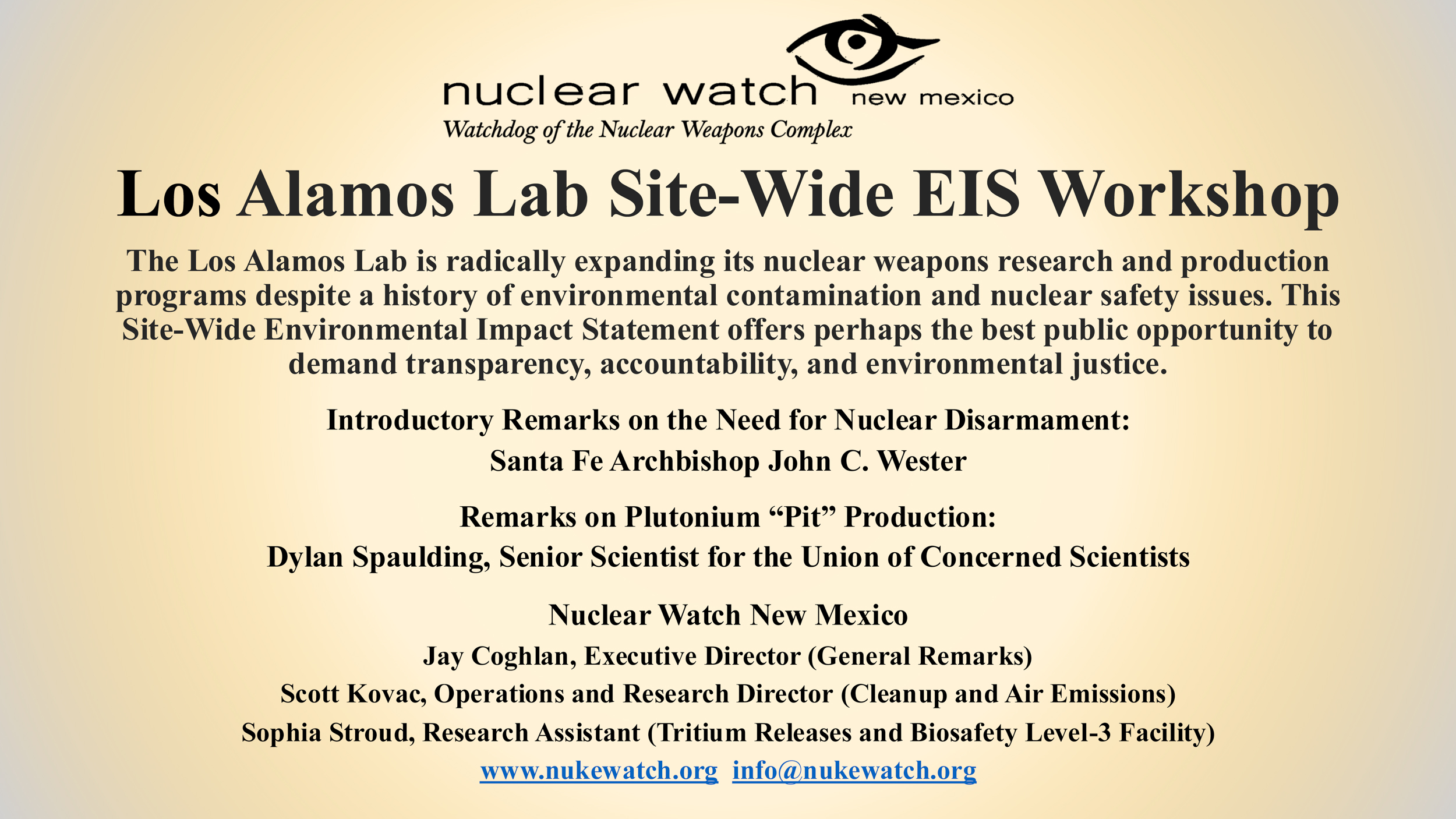 |
Working Together, We Can Meet Enormous Challenges
Dear Friends,
As we look back on 2024, Nuclear Watch New Mexico hopes you had a wonderful year. We wish you peace and prosperity. Given uncertain times ahead, we are confident that by working together we can meet the enourmous challenges that are in store for us in 2025.
Together, we can resist provocative nuclear weapons programs that are helping to fuel a new arms race. A prime example is the expanded production of plutonium “pit” bomb cores at both the Los Alamos National Laboratory (LANL) and the Savannah River Site in South Carolina. NukeWatch NM is leading the effort to compel legally required public review of the National Nuclear Security Administration’s (NNSA’s) most expensive program ever (but has no credible cost estimates). New pit production is not needed because it is for new weapons designs, not to maintain the safety and reliability of the existing, extensively tested nuclear stockpile.
Together we can watchdog LANL cleanup. Please join us next year for public hearings where we will oppose LANL’s plans to “cap-and-cover” existing radioactive and toxic wastes, leaving them permanently buried in unlined pits and shafts as a perpetual threat to groundwater.
We ask for your help in compelling the Department of Energy to stop expansion of the Waste Isolation Pilot Plant (WIPP) in southern New Mexico. WIPP’s mission is fundamentally changing from cleanup to direct support of the new arms race as the dump for new radioactive plutonium wastes from expanding nuclear weapons production. See how to make a difference at https://stopforeverwipp.org/home
Together, we can make progress toward a future nuclear weapons-free world! With deep appreciation, we thank those who have already contributed. If you haven’t given yet, please know that your support is vital to our ongoing work. Your generous tax deductible donation can be mailed to Nuclear Watch NM, 903 W. Alameda #325, Santa Fe, NM 87501, or made online at nukewatch.org/donate/
Our sincere gratitude and best wishes for the coming year,
Jay Coghlan, Executive Director
Scott Kovac, Research Director
Sophie Stroud, Digital Content Manager
P.S.: If you’re so inclined, please go to https://www.armscontrol.org/acpoy/2024 to vote for the 2024 Arms Control Person(s) of the Year. Savannah River Site Watch, Tri-Valley CAREs, the Gullah/Geechee Sea Island Coalition, the South Carolina Environmental Law Project and NukeWatch NM are nominees for their lawsuit to compel the NNSA to complete a nation-wide programmatic environmental impact statement on expanded plutonium pit production.
The U.S. Nuclear Policy of Deterrence: What if it Fails?
The U.S. nuclear strategy of deterrence “aims to prevent an adversary from launching a nuclear weapon by assuring that any first strike will be followed by a retaliatory second strike, whose effects will equal or exceed the original damage and may eliminate the adversary altogether.” From a purely theoretical standpoint, its premise is simple: the threat of overwhelming retaliation should prevent adversaries from launching a first attack. As illuminated in an insightful analysis in the Boston Review, current deterrence policies use perpetual threats of annihilation as a means of coercion. Our most “successful” solution so far to the threat of catastrophic nuclear war has been a tool of extortion, rather than genuine security measures such as binding arms control and nonproliferation agreements.
Deterrance is “framed wholly as defensive and preventative (and from day to day, largely successful in deflecting our attention from the actual first use stance the country has had for nearly eighty years).” [Boston Review] But what if this strategy fails? What if deterrence doesn’t work as intended?
The policy of deterrence assumes that rational actors will always act in their own self-interest to avoid nuclear war.
New Interactive Series from The New York Times: “The Price” of New U.S. Nuclear Weapons
The output at Rocky Flats, which at one point during the Cold War hit 1,000 pits per year, dwarfs the modern ambitions of Los Alamos. Still, the new production is expected to generate levels of radiological and hazardous waste that the lab has not experienced. This comes on top of the contamination already present, which the government estimates will cost some $7 billion to clean up.
“We’re endangering our community for an unnecessary arms race that puts us all at risk,” says Jay Coghlan, the executive director of Nuclear Watch New Mexico, a Santa Fe-based watchdog.
By W.J. Hennigan | Photographs by An-My Lê – THE NEW YORK TIMES October 10, 2024 nytimes.com
Opinion: America Is Updating Its Nuclear Weapons. The Price: $1.7 Trillion Over 30 Years.
Letter To the Editor in Response to the Article Above by Dr. Ira Helfand:
Re “The Staggering Cost of America’s Nuclear Gamble,” by W.J. Hennigan (Opinion, “At the Brink” series, Oct. 13):
Mr. Hennigan says, almost in passing, that “nuclear weapons do deter our adversaries.”
There is a lot to unpack in these six words. There certainly are situations in which one country’s nuclear weapons do deter its adversaries. Russia’s threats to use its nuclear weapons have clearly deterred the United States and NATO from doing more to support Ukraine.
But does deterrence guarantee that these weapons will not be used? Because a failure of deterrence will cause a catastrophe beyond reckoning.
A nuclear war between the United States and Russia could kill hundreds of millions of people in the first afternoon, and the ensuing climate disruption and famine could kill three-quarters of humanity over the next two years. Is there any conceivable benefit that can be derived from possessing these weapons that is worth running this terrible risk?
There have been many near misses already during the nuclear weapons era, crises where certain countries actually began preparations to launch nuclear weapons.
As former Defense Secretary Robert McNamara pointed out, we have not survived this far into the nuclear era because we knew what we were doing. Rather, as McNamara put it, “It was luck that prevented nuclear war.”
The idea that deterrence makes us safe is a dangerous myth. As our highest national security priority, we should be actively seeking a world without nuclear weapons. We don’t know if such an effort can succeed; we have never tried. We do know what will happen if deterrence fails.
Ira Helfand
Northampton, Mass.
The writer is a former president of the International Physicians for the Prevention of Nuclear War, which received the 1985 Nobel Peace Prize.
The Pentagon considers eight projects part of its nuclear modernization budget: new ICBMs, cruise missiles, updates to submarine-launched missiles, a new stealth bomber, new strategic submarines, updates to existing gravity bombs, modifications to the F-35 fighter jet that allow it to drop nuclear weapons, and updates to the existing Cold War nuclear command-and-control network. Since 2013, Congress has approved about $67 billion for those, according to Forecast International, a data analysis firm owned by Defense One’s parent company. In fiscal 2021, the funding totaled $13 billion, or about 1.8 percent of the Pentagon’s $704 billion budget.
A Rough Breakdown of the Trillion Dollar Cost of Modernization:
1/3 NNSA
The National Nuclear Security Administration is a semi-autonomous agency within the Department of Energy
Warhead Production
- Warhead "Life Extension Programs"
- Includes upgrades to B61, W80, W76
- New plutonium pit production
- Includes upgrades to B61, W80, W76
- Nuclear Weapons Labs
- Nuclear Weapons Production Plants
- Other Facilities, infrastructure
2/3 Department of Defense
Warhead Delivery Systems
- Land-Based ICBMs
- 642 (400 to deploy) new ICBMs
- SSBNs: Ballistic Missile Submarines
- 12 new Columbia Class SSBNs
- Bombers & Air-Launched Cruise Missiles
- Upgrades to the B-1, the B-2, and the B-52
- LRSB: 100 new B-21 strategic bombers
- LRSO: 1000+ nuclear-capable cruise missiles
- Upgrades to the B-1, the B-2, and the B-52
Warhead Production and 'Life Extension Programs'
- The W76 was chosen as a SSBN (submarine-launched ICBM) warhead.
- The W80-4 is to be the warhead for the next-gen nuclear cruise missile (LRSO).
- The B61-12 upgrade with new Tail-kit.
- Plutonium pit production.
Note that the NNSA (National Nuclear Security Administration) runs all weapons related activities under the DOE. Environmental cleanup of wastes from nuclear weapons production is under the jurisdiction of the DOE without NNSA involvement. While the NNSA budget is set to increase, DOE's is set to decrease.
Warhead Delivery Systems
- New ICBMs (aka GBSD, or Ground-Based-Strategic-Deterrent): This is a contested element of the planned triad modernization. William Perry and others have argued that land-based ICBMs are the one way a computer glitch could end up triggering total nuclear war, and should therefore be eliminated in favor of bombers and SSBNs. Boeing, Northrup Grumman, and Lockheed have submitted bids for the roughly $70 billion job.
- SSBNs are to be designed and built by Electric Boat in Connecticut. Plans call to build 12, at a cost $5 billion apiece, and no-one knows where those funds will come from. There's been talk of a supplemental Sea-Borne Deterrence Fund; but Air Force wants a similar budgetary trick for its nuclear systems.
- Bombers: Northrup Grumman is prime contractor on the new B-21 as well as the B-2 upgrade. Boeing is contractor for B1 and B52 upgrades.
- Long-Range Stand-Off cruise missiles: This is the other most contested of the new systems planned, with many experts calling it dangerous and unnecessary. Air Force has issued a call for bids for 1000+ missiles. Boeing, Raytheon, Northrop Grumman, and Lockheed Martin are expected to submit bids.
Resources
Challenging the UPF Bomb Plant – Y-12 Supplement Analysis Comments
On July 5, 2018, OREPA and Nuclear Watch New Mexico—along with many of you!—submitted formal comments on the National Nuclear Security Administration’s plan for the Y-12 Nuclear Weapons Complex in Oak Ridge, TN. The gist of our comments is that NNSA is required to prepare a new Environmental Impact Statement, or at least a thorough Supplemental EIS, and can’t move forward with the UPF bomb plant until they have done so.
The comments, which you can read or download here, now become part of the Administrative Record which the judge hearing our legal challenge will use to decide the case.
We believe the government’s attempt to rectify their past errors is way too little and way too late, and the Supplement Analysis has effectively strengthened our argument. In addition to the comments, we also submitted attachments, including expert declarations on the NNSA’s plans, the seismic risks they are overlooking, and the unsuitability of a piecemeal approach to planning at Y12. You can read or download the attachments here.
Quotes
Defense Bills Would Create Separate Fund for New Ohio-Class Nuclear Submarines
Far-reaching implications
“The creation of a National Sea-Based Deterrence Fund to pay for an Ohio-class ballistic missile submarine replacement could significantly alter the typically underfunded Navy shipbuilding account, while also establishing a precedent that other military services may attempt to leverage in years to come.”
Justifying Nuclear Weapons
“Both Russia and the United States are now officially and publicly using the other side as a justification for nuclear weapons modernization programs”
– Hans Kristensen, from The Intercept, 2/23/16
U.S. Ramping Up Major Renewal in Nuclear Arms
“What few Americans realize is that the U.S. is completely rebuilding the production side of its nuclear weapons complex, with new multi-billion dollar factories expected to operate until ~2075. The aim of the for-profit nuclear weapons establishment is a never-ending cycle of exorbitant Life Extension Programs for existing nuclear weapons. These programs will not only extend their service lives for up to six decades but also endow them with new military capabilities, despite denials at the highest levels of government…”
-Jay Coghlan, Nuclear Watch NM comment on NY Times Article U.S. Ramping Up Major Renewal in Nuclear Arms
This White House has Caved to the Nuclear Priesthood
“The United States can deter any country from using nuclear weapons against America and its treaty allies with a nuclear force that is far smaller, less destabilizing, and less expensive than the one the Pentagon is planning to build.
This White House has caved to the nuclear priesthood in the bureaucracy. Instead of staying on nuclear autopilot, the next administration needs to fundamentally rethink the role of nuclear weapons in U.S. national security strategy, the costs of implementing the current strategic force modernization program, and the alternatives that could provide greater stability and less risk of nuclear conflict at a much lower cost.”
-Richard Sokolsky, Gordon Adams, Carnegie Endowment, January 18, 2016
For more click here.
Bad Idea. Don’t Do It.
“Let me be crystal clear: There is no such thing as ‘limited use’ nuclear weapons, and for a Pentagon advisory board to promote their development is absolutely unacceptable. This is even more problematic given President Trump’s comments in support of a nuclear arms race.
As Deputy Defense Secretary Robert Work testified in 2015, ‘Anyone who thinks they can control escalation through the use of nuclear weapons is literally playing with fire. Escalation is escalation, and nuclear use would be the ultimate escalation.’
Nuclear weapons present us with a paradox: We spend billions of dollars building and maintaining them in the hope that we never have to use them. The sole purpose of nuclear weapons must be to deter their use by others. Designing new low-yield nuclear weapons for limited strikes dangerously lowers the threshold for their use. Such a recommendation undermines the stability created by deterrence, thereby increasing the likelihood of sparking an unwinnable nuclear war.”
-Senator Dianne Feinstein, (D.CA) Senate Intelligence Committee Vice-Chair
No To a New Generation of ICBMs
“As long as we have ICBMs, there will be the possibility of the President launching them in response to a false alarm. Since the ICBMs are known in fixed locations, they can be attacked and we presume that any nuclear attack on the United States would include attacks against those ICBMs. And therefore, we have a policy called launch-on-warning which means if we have a warning of an attack, then the President would be notified and he has the option of launching those ICBMs before the attack actually reaches its targets.
Now the danger with that, of course, is that if the warning of attack is wrong, if it’s a false alarm, and the President actually launches the ICBMs, he will have no way of calling them back or destroying them in-flight if, in fact, the alarm is a false alarm.So the problem with the ICBMs fundamentally is that if we get a false alarm and the President launches the ICBMs, we will have started a nuclear war capable of ending civilization based on a mistake, based on an accident, based on a false reading. That is not very likely to happen- it’s a low probability- but a low probability with a very, very high consequence. So that’s my concern with the ICBM program and it’s a fundamental concern; as long as we have ICBMs, there will be the possibility of the President launching them in response to a false alarm.”
Senator Dianne Feinstein (D-CA)
Senator Dianne Feinstein (D-CA)There’s one role- and only one role- for nuclear weapons, and that’s deterrence. We cannot, must not, will not ever countenance their actual use. There’s no such thing as limited nuclear war, and for the Pentagon’s advisory board to even suggest such a thing is deeply troubling.
– Senator Diana Feinstein


